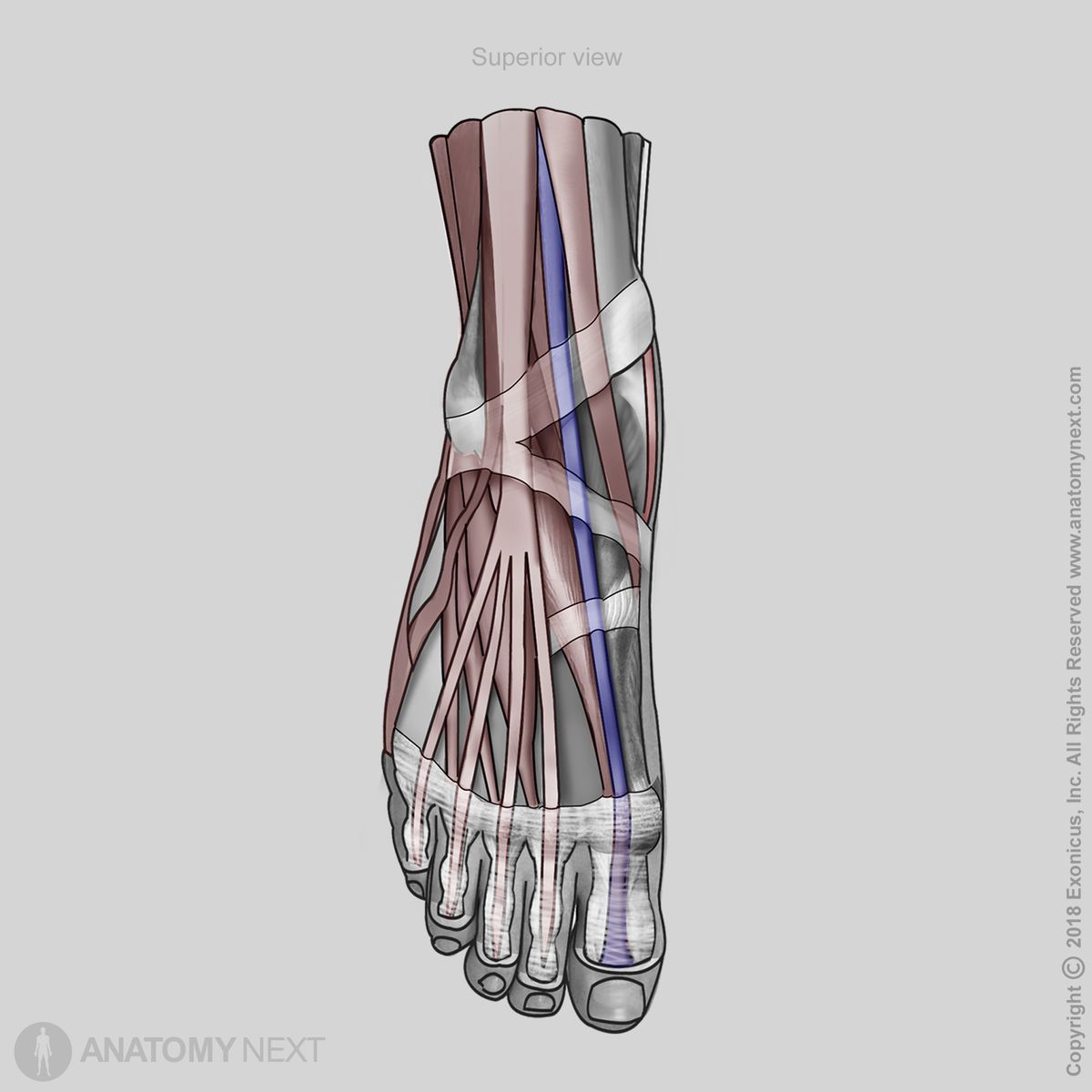- Anatomical terminology
- Skeletal system
- Joints
- Muscles
- Head muscles
- Neck muscles
- Muscles of upper limb
- Thoracic muscles
- Muscles of back
- Muscles of lower limb
- Pelvic muscles
- Muscles of thigh
- Muscles of leg
- Anterior compartment
- Lateral compartment
- Posterior compartment
- Muscles of foot
- Heart
- Blood vessels
- Lymphatic system
- Nervous system
- Respiratory system
- Digestive system
- Urinary system
- Female reproductive system
- Male reproductive system
- Endocrine glands
- Eye
- Ear
Extensor hallucis longus
The extensor hallucis longus (Latin: musculus extensor hallucis longus) is a thin muscle located in the anterior compartment of the lower leg between the tibialis anterior and extensor digitorum longus muscles. It extends from the fibula to the distal phalanx of the hallux. As the name suggests, the primary function of the muscle is the extension of the first toe.
| Extensor hallucis longus | |
| Origin | Middle third of anterior surface of fibula, interosseous membrane of leg |
| Insertion | Base of distal phalanx of hallux |
| Action | Extension of hallux, foot dorsiflexion, foot inversion |
| Innervation | Deep peroneal (fibular) nerve (L4 - S1) |
| Blood supply | Branches of anterior tibial artery |
Origin
The extensor hallucis longus muscle originates from the middle one-third of the anterior surface of the fibula and interosseous membrane of the leg.
Insertion
The extensor hallucis longus inserts on the base of the distal phalanx of the first toe (hallux or big toe).

Action
The extensor hallucis longus muscle provides extension of the hallux at the first metatarsophalangeal and interphalangeal joints. Additionally, it assists in the inversion and dorsiflexion of the foot.
Innervation
The extensor hallucis longus is innervated by the deep peroneal (fibular) nerve (L4 - S1) - a branch of the common peroneal (fibular) nerve.
Blood supply
The extensor hallucis longus receives arterial blood supply from the branches of the anterior tibial artery.